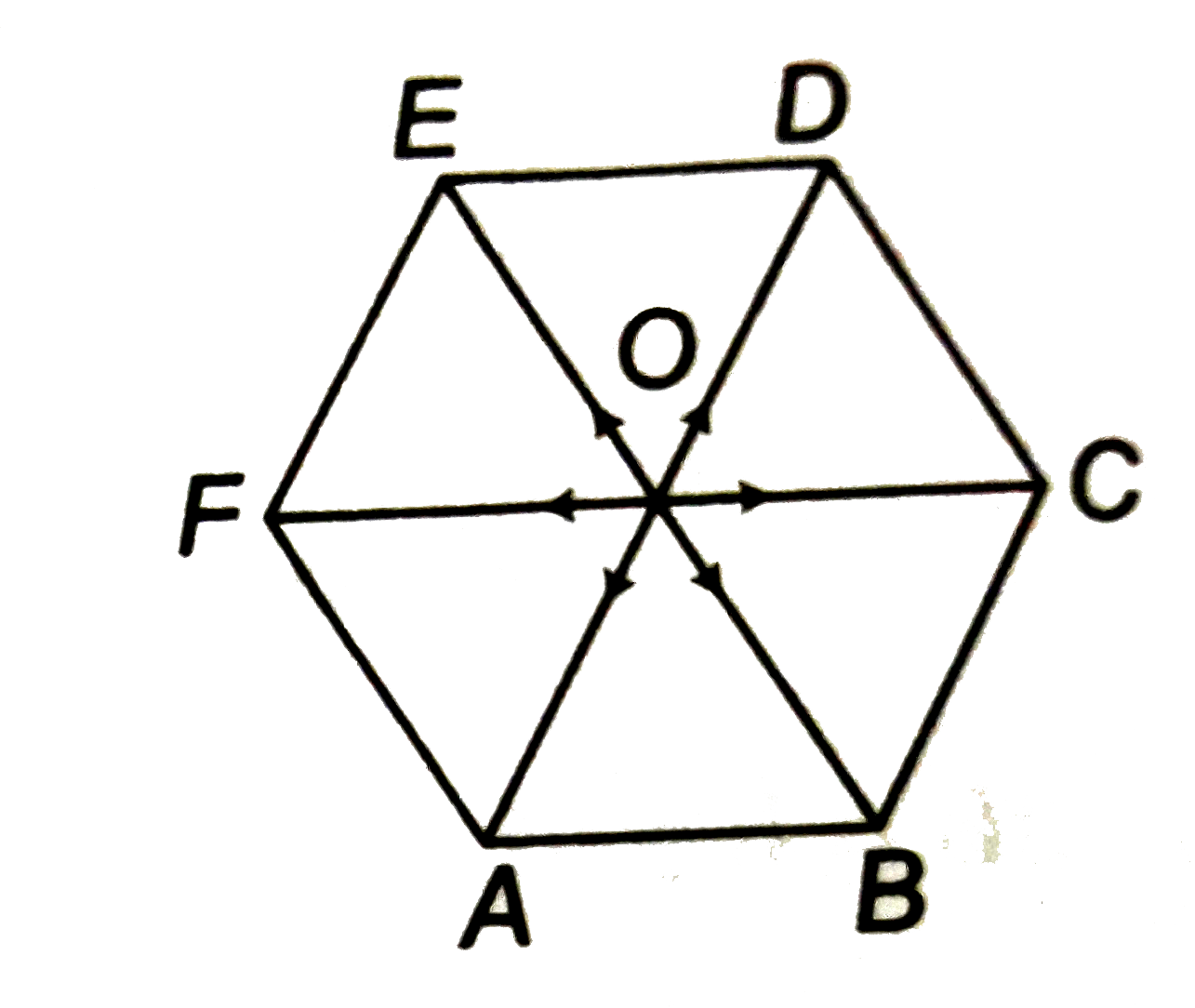In a regular hexagon ABCDEF, A→B=a, B→C=→b and C→D=→C.Then →AE= Solution in Kannada
2b−a
b−a
2a−b
a+b
The correct Answer is:A
As in figure, AB=a,BC=b,
So, AD=2bandED=a

Now, AE+ED=AD
⇒AE=AD−ED=2b−a
Similar Questions
ABCDE is pentagon, prove that →AB+→AE+→BC+→DC+→ED+→AC=3→AC
View SolutionIf →a, →b are the vectors forming consecutive sides of a regular of a regular hexagon ABCDEF, then the vecrtor representing side CD is
a.→a+→b b. →a−→b c. →b−→a d. −(→a+→b)
View SolutionIn a regular hexagon ABCDEF, A→B=a, B→C=→b and →CD=c Then\ →AE=
a.→a+→b+→c b. 2→a+→b+→c c. →b+→c d. →a+2→b+2→c
View SolutionIf ABCDEF is a regular hexagon, them →AD+→EB+→FC equals 2→AB b. →0 c. 3→AB d. 4→AB
View SolutionABCDEF si a regular hexagon with centre at the origin such that A→D+E→B+F→C=λE→D. Then, λ equals
View SolutionStatement 1: →a,→b,and→c are three mutually perpendicular unit vectors and →d is a vector such that →a,→b,→cand→d are non-coplanar. If [→d→b→c]=[→d→a→b]=[→d→c→a]=1,then→d=→a+→b+→c Statement 2: [→d→b→c]=[→d→a→b]=[→d→c→a]⇒→d is equally inclined to →a,→b,→c.
View SolutionIf (→a×→b)×(→b×→c)=→b,where→a,→b,and→c are nonzero vectors, then (a)→a,→b,and→c can be coplanar (b)→a,→b,and→c must be coplanar (c)→a,→b,and→c cannot be coplanar (d)none of these
View SolutionA B C D E is pentagon, prove that vec A B + vec B C + vec C D + vec D E+ vec E A = vec0 vec A B+ vec A E+ vec B C+ vec D C+ vec E D+ vec A C=3 vec A C
View Solution
